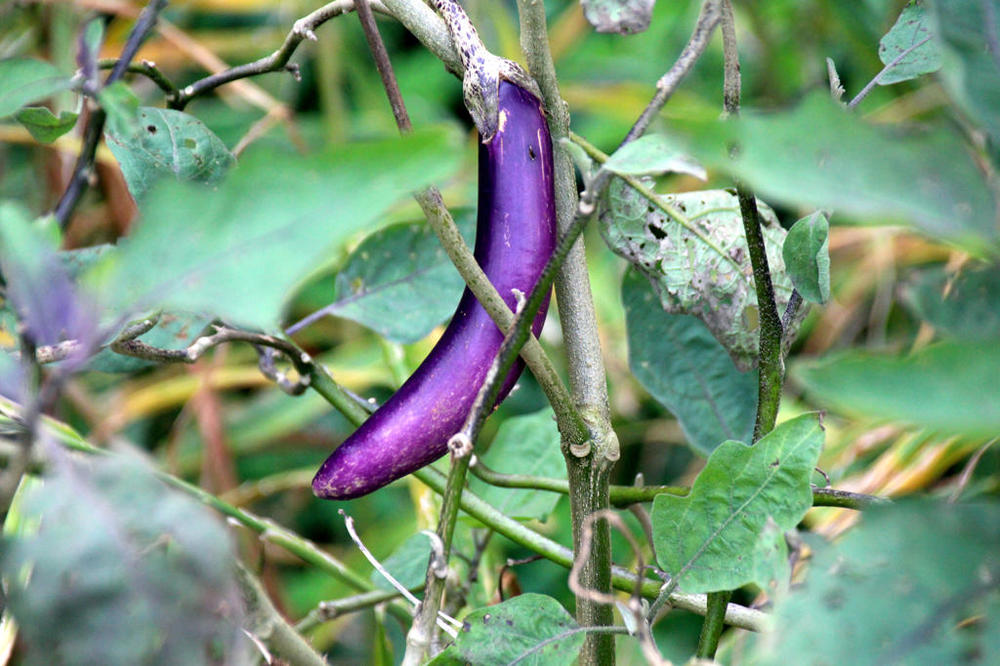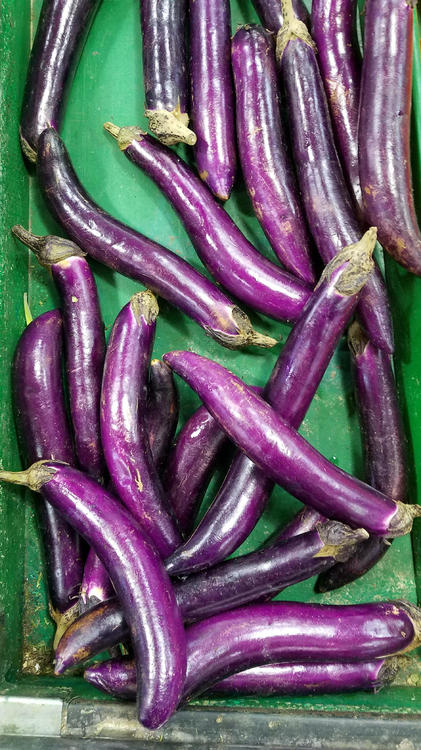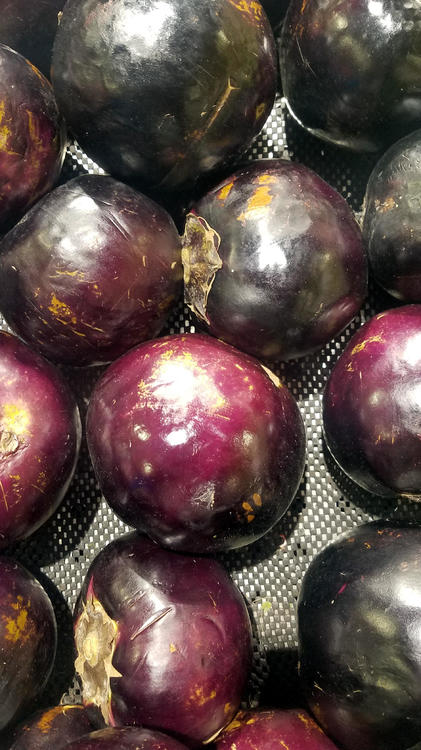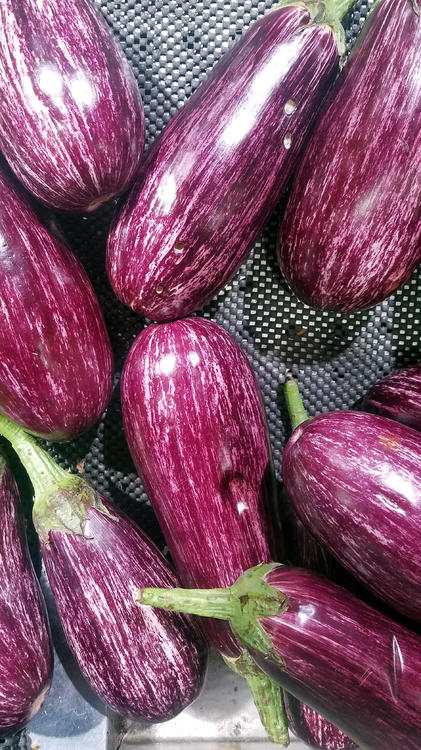Solanum melongena
Here is another that I never associated with China until coming here. Again it turns out that China grows most of the world's supply - 62% in 2016.
I am talking aubergine or eggplant. Being British/French , I default to 'aubergine' from the French, but here I will force myself to use 'eggplant'. not out of deference to sensitive members, but because it is shorter and I'm going to have to type it a lot. 😄
In Chinese, it's 茄子 (Mand: qié zi; Cant: ke4*2 zi2).
Technically it's a fruit or berry, but always treated as a vegetable, so here it is.
China being in Asia, we usually get the long slim Asian variety.
That said, other varieties do turn up on occasion. My local supermarket had three, today - the ones above and these round ones...
and these
Sadly we do not get the white variety, 白茄子 (Mand: bái qié zi; Cant: baak6 ke4*2 zi2) here, although I've seen them in Hong Kong. Nor do we get the mini Thai eggplants which I love so much, 迷你茄子 (Mand: mí nǐ qié zi; Cant: mai4 nei5 ke4*2 zi). You will notice that the Chinese name includes a Chinese phonetic equivalent if the English 'mini".
Eggplants are used in many dishes, but there are two dishes which are well known throughout China. The first, eggplant with minced/ground pork is either 茄子肉末 (Mand: qié zi ròu mò; Cant: ke4*2 zi2 juk6 mut6) or 肉末茄子 (Mand: ròu mò qié zi; Cant: juk6 mut6 ke4*2 zi2). The names indicate which ingredient is predominant. The first indicates that the dish has more egg plant than minced pork, the second the reverse. Some restaurants have both on their menus.
The second is 鱼香茄子/魚香茄子 (Mand: yú xiāng qié zi; Cant: jyu4*2 hoeng1 ke4*2 zi2), which translates as 'fish-flavour eggplant'. It contains no fish. In fact, it's vegan in its traditional form. The moniker just means that it is cooked with the flavourings usually used with fish.
Many online recipes for these two dishes conflate them into one, but they are from two distinct Chinese cuisines and have very different flavours. The first is from eastern China, especially Hangzhou near Shanghai; the second is from Sichuan.
In Yunnan province , the Dai ethnic minority often roast eggplants. Delicious.
Eggplant leaves and flowers are not edible and even handling them can cause nasty skin reactions. Eaten in large quantities the leaves are poisonous.







